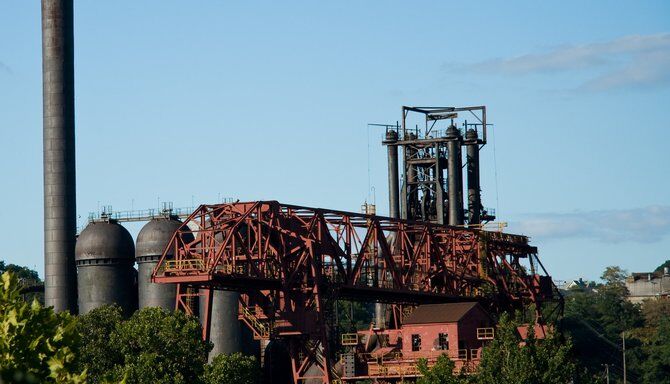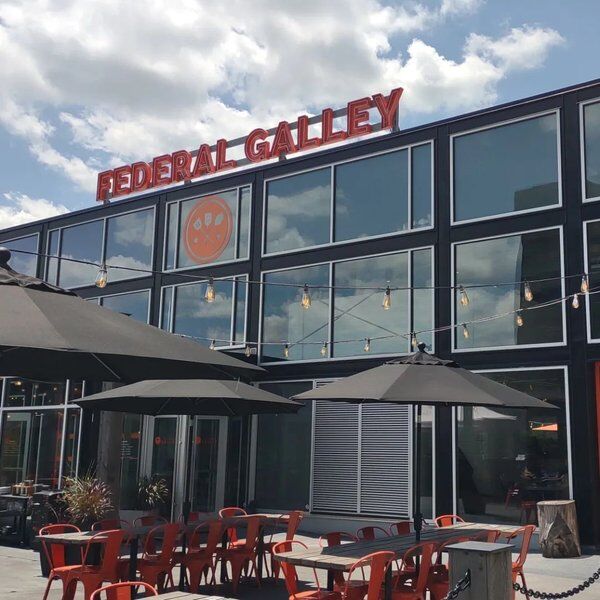
What is Carrie Furnace?
A historic blast furnace on the Monongahela River in Swissvale, Pennsylvania, Carrie Furnace was built in 1884 as part of Homestead Steel Works, which had opened 3 years before.
The Steel Works operated until 1982 before shutting down due to a dramatic downturn in the domestic steel industry. Since then it has been mostly disassembled except for furnaces 6 and 7, now known together as Carrie Furnace. They are today some of the few surviving pre-WW2 blast-furnaces.
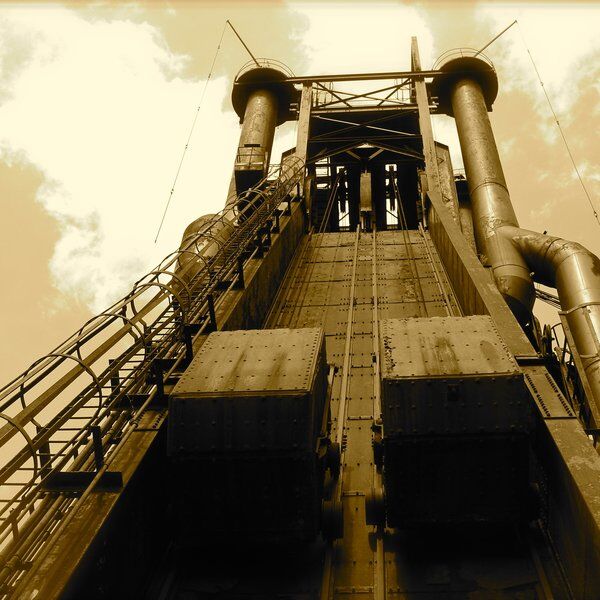
The History Behind Carrie Furnace
Homestead Steel Works was bought by wealthy industrialist Andrew Carnegie in 1883, 2 years after its construction.
Carnegie rapidly set about transforming it into one of the largest steel mills in the world. The surviving furnaces were an integral part of this project.
A town developed around the steel mill, its workforce at one point growing to over 15,000.
Technical advancements towards the end of the 19th century meant the mill was soon producing more steel than ever and requiring less skill from its workers. Profits soared and wages fell. Soon the townsfold grew disgruntled.

Strikes at Carrie Furnace
Since the steel mill's early days many of its workers had been members of the Amalgamated Association of Iron and Steel Workers (AA). And Carnegie, despite being a public supporter of labour unions, had been trying to reverse this. He had privately hired Henry Frick to run his company on the understanding that Frick would break up the AA.
In as early as 1982 Frick had tried to insert a non-union clause into the contracts of the workers at the mill. This triggered a strike that same year which resulted in violence on both sides and victory for the union.
Relations between the mill and the AA once again broke down in 1889 when negotiations over a 3 year collective bargaining agreement reached an impasse. Another strike followed.
The town was seized, workers ceased working and their non-union replacements were prevented from reaching the mill. The union eventually won their bargaining agreement but lost out on many of their other demands.
For almost three years things were relatively peaceful, but as the agreement approached its expiry date sparks once again began to fly.
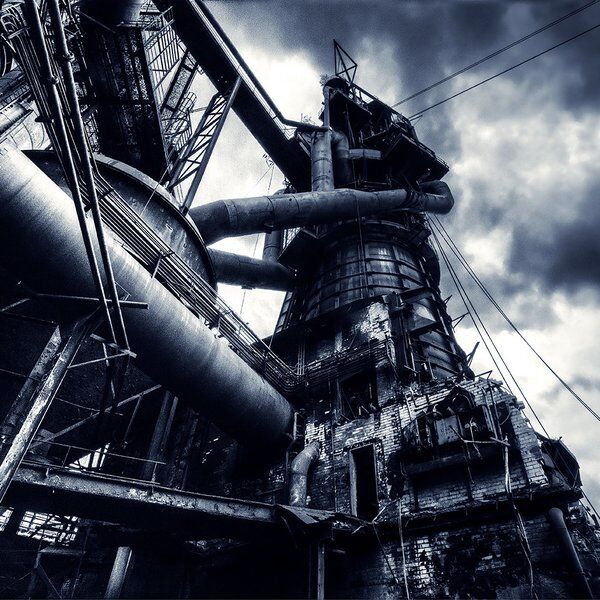
The Battle of Carrie Furnace
The union workers wanted more from any new agreement, and Frick was offering less. On June 29th, the final day of the old agreement, he locked the plate mill and one of the furnaces. In response the union rose up.
They formed picket lines around the mill, maintaining them in shifts to keep its entrances blocked 24/7.
At 4am, on July 6th Frick tried sneak an armed force of private security guards in by barge. This was apprehended and chaos broke loose.
Guns were fired on both sides. 16 people were killed and many more injured. Eventually the state militia had to intervene. And even that wasn't the end of it.
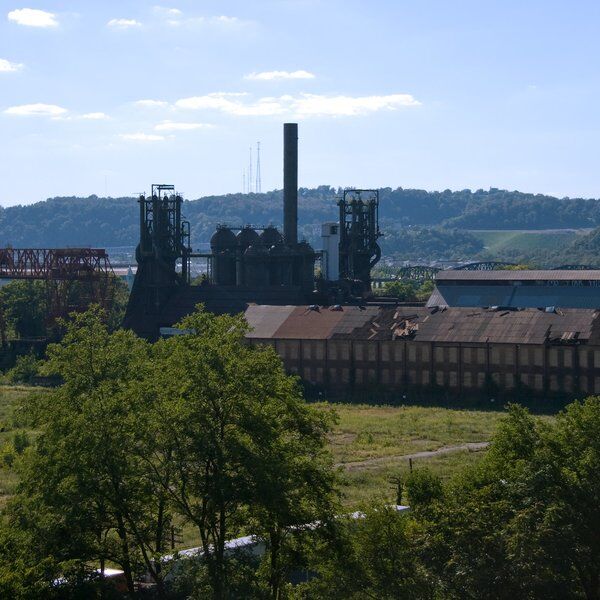
The Carrie Furnace Assassin
Word of the industrial struggle soon reached New York anarchist Alexander Berkman. Enraged by the treatment of the millworkers he decided to take action on their behalf.
On July 23rd he burst into Frick's office armed with a gun and a knife. Frick suffered wounds from both but survived and continued in his role. Berkman was sentenced to 22 years in prison.
The assassination attempt damaged public support for the strike and the union soon found it was fighting a losing battle. On August 12th they voted to return to work on Frick's terms, utterly defeated. The AA never fully recovered.
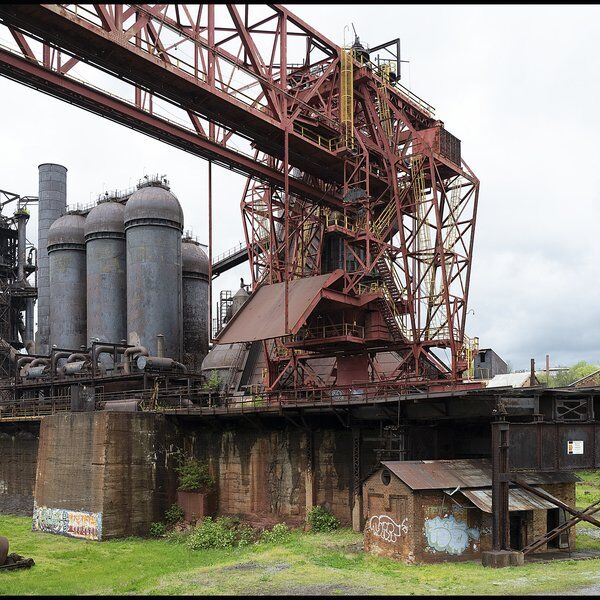
Carrie Furnace into the Modern Day
The mill continued to produce steel throughout most of the 20th century, at its peak making 1,000-1,250 tons a day. Carnegie sold it to US Steel in 1901. It finally closed in 1986.
Today it is owned by Allegheny County. There are currently plans to redevelop it into a hotel, housing, manufacturing and museum complex.
Tours are available on Wed-Sun at 10am-2pm and cost $22 in advance or $25 on the door with discounts available for seniors, students and kids.
Since 2006 Carrie Furnace has been a designated US National Landmark.
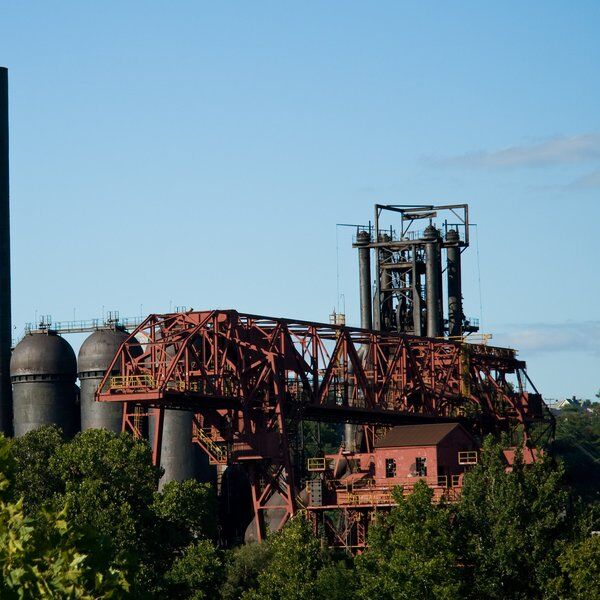
If you're looking for other ways to immerse yourself in Pittsburgh culture, why not check out our secret escapes and lose yourself in an urban adventure?!
